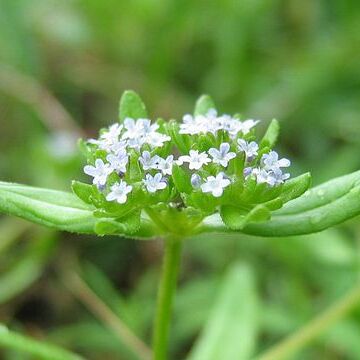Annual herbs. Lvs simple and entire to sinuate or dentate. Cymes numerous, small and conspicuously bracteate, or rarely fls solitary. Fls small and inconspicuous, often overtopped by subtending bracts. Calyx variously developed, usually conspicuous or reduced to a ring of inconspicuous teeth, sometimes 0, forming a pappus or not at fruiting. Corolla ± actinomorphic; tube lacking a basal spur, but sometimes slightly gibbous. Stamens 3. Fr. flattened to 3-4-angled or rounded in cross-section, glabrous, hairy or echinate.
Cal minute or obsolete; cor funnelform, narrowly campanulate, or tubular, the 5 lobes subequal; stamens 3; stamens and style exsert; fr dry, 3-locular, the one locule fertile and 1-seeded, the other 2 empty; dichotomously forked, annual or biennial herbs with simple, mostly sessile lvs, the lower often connate; fls in cymose glomerules ending the branches. Our spp. much alike in aspect and habitat. 60, N. Hemisphere.

